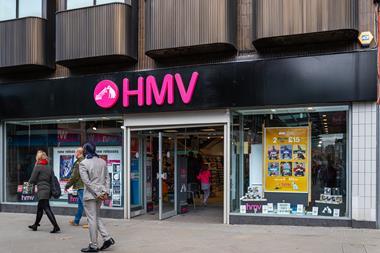As shopping preferences move between online and offline towards a mixture of both, JRNI’s John Federman details the best in-store practices to attract the multichannel customer.
Before the era of online shopping, consumers shopped exclusively in stores, travelling to them and developing personal relationships with staff.
With the advent of the digital age, however, customers swapped relationships for convenience, shopping via smartphones, tablets and computers – no matter what the time or location.
This trend further accelerated with the disruption of Amazon and its expedited deliveries, which allowed consumers to make their purchases even faster.
“Consumers today want the best of both worlds: face-to-face for deeper conversations and online for price, features and brand comparison”
Now consumer perspectives about shopping are changing once again – and that’s good news for retailers.
Consumers today want engaging multichannel experiences, according to JRNI’s third annual Modern Consumer Research Report, with the best of both worlds: face-to-face for deeper conversations and online for price, features and brand comparison. The combination creates the ideal shopping journey.
In addition to requiring more choice, consumers also want better service, personalised appointments and special events.
Flawless service
While the percentage of shoppers who rated in-store experiences as ‘excellent’ has grown by about 50% since 2017, consumers still mandate superior service and see areas where stores can improve.
Specifically, customers want retailers to enhance staff knowledge, staff availability, speed and store atmosphere to ensure outstanding experiences.
“Only 44% of consumers believe stores can explain products and services at satisfactory levels”
60% of shoppers, for example, prefer shopping online because of the detailed product information available – increased staff knowledge would help attract them to the store instead.
Currently, only 44% of consumers believe stores can explain products and services at satisfactory levels.
This presents a tremendous opportunity for retailers to have more thorough conversations with customers, whereby more engaging dialogues can yield more rewarding experiences.
Interestingly, PwC has reached similar conclusions about consumer definitions of positive customer experience.
Its research found nearly 80% of US consumers cite speed, convenience, knowledgeable help and friendly service as the most important requirements.
Personalised experiences
Customers want retailers to create immersive in-store experiences. One way to do this is by offering appointments, putting the power of convenience and personalisation into customers’ hands.
Consumers can easily schedule appointments via retailers’ websites on their devices and meet with in-store staff to receive recommendations for products or services they are interested in purchasing.
“57% of consumers are interested in scheduling appointments to speak with in-store staff”
The majority of consumers – 57% of them – are interested in scheduling appointments to speak with in-store staff, showing a desire for personalised discussions.
When customers and staff meet face-to-face, they can develop stronger relationships that translate into loyalty and the opportunity for additional purchases.
Special events
More than 60% of consumers want to attend in-store events to learn more about products and services, especially to interact with items before purchasing them.
“In-store events that feature early access to products, book signings, education and product demonstrations attract 50% or more into stores”
In-store events that feature early access to products, book signings, education and product demonstrations attract 50% or more of invitees into stores.
This shows not only that customers enjoy hands-on experiences, but that they want to deepen their engagement with retailers.
The holiday season is the perfect time for retailers to experiment with in-store events to bring customers together and drive increased sales.
Holiday shoppers are more spontaneous and purchase differently versus other times of the year, according to Bazaarvoice, so they are likely to engage with this type of experience.
Today’s consumers expect seamless multichannel journeys from their retailers. It’s time for retailers to listen to their customers, so they can meet these expectations.

John Federman is chief executive of JRNI, a software-as-a-service (SaaS) scheduling platform for optimising the customer journey
Prior to JRNI, Federman served as chief executive of Webcollage, a cloud-based content management platform for the publishing of rich product information.
He also serves as an adviser to Boston-based Salsify and sits on the board of New York’s T-Ink. He is a regular speaker and contributor on ecommerce strategies.
































No comments yet